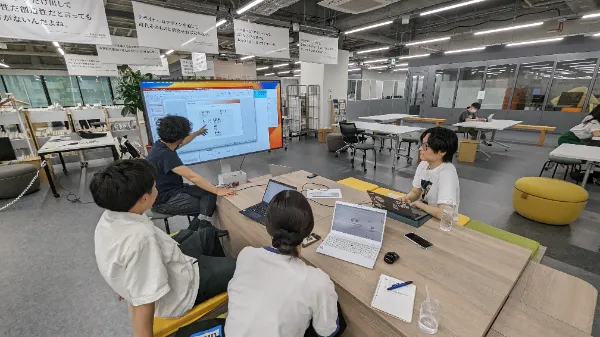

User Experience Design Course Overview
Designing services that deliver new experiences
Recently, industry has shifted its focus from products to experiences, looking at the experience value (user experience, or UX) derived from products and services. Designing that value is called UX design, and it requires understanding invisible data, along with the ability to collect, analyze, precisely manipulate, and appropriately express and communicate that data. What this means 欧洲杯足彩app下载_欧洲杯下注平台-【直播*网站】 specifically is, for example, user interface (UI) design skills and programming and software design capabilities.
Designing exciting systems
The UX Course focuses primarily on designing user experiences based on device operation and information communication. This does not just mean screen design, however. Optimal design requires considering the entire data environment, including cognitive science-based design geared to human behavioral characteristics, overall system and service processes, and information technologies like gesture input and spatial mapping. In the UX Course, students comprehensively examine the various technologies around human behavior and design human behavioral processes with a focus on operation and communication, in order to plan, design, and develop applications and services that bring new experiences to users.
Curriculum Overview
The curriculum mainly covers logical design methods, data expression methods, and software planning, design, and development methods. In particular, “Practice on User Experience Design ,” a core subject in the second semester of the first year, enables students to experience basic UX design processes and methods and learn design fundamentals. Second-year students look at UX design concepts, processes, and mindsets in “Overview of Human-Centric Design” and acquire design skills in “Overview of Interfaces” and “Practice on Contents Design.” The third year focuses on developing practical skills.
Specialist subjects primarily address design and software. Students interested in artificial intelligence may take some intelligence and control subjects. Some students studying UX design may become interested in software development or want to try both. In many companies, designers handle both programming and implementation, and some organizations have software engineers doing UX design. The UX Course takes a balanced approach to learning both UX design and the implementation technology behind it, aiming for highly feasible designs.
Keywords for Learning
- Application design
- AR
- VR
- MR
- XR
- website design
- spatial presentation
- logo design
- print media design
- DTP
- character design
- UX design
- cognitive engineering
- marketing
- user interfaces
- software
- interaction
- HCI
- cognitive science
- behavioral analysis
Imagine
What kind of experiences do people want next?
Create
Propose: App and user interface proposals
Implement: Realization through information processing technology
Evaluate and learn
Analyze which experiences lead to value
Faculty & Researchers
コースデータ
| Degree Awarded | Bachelor of Design Engineering |
|---|---|
| Admission Capacity | 50 students |
| Teaching License | High School Teacher’s License (Industrial) |
Research Examples
- Development of feedback methods to boost online learning engagement
- Development of catchphrase generation logic utilizing battle rap rules
- Development of easily recognizable but inoffensive home appliance operating sounds
- Development of new communication methods between home appliances and humans
- Development of training methods that cause trainees to unconsciously want to keep training
- Development of methods for organizing complex thoughts
- Development of customer management systems that minimize the input burden
- Development of optimal data presentation methods for e-commerce sites